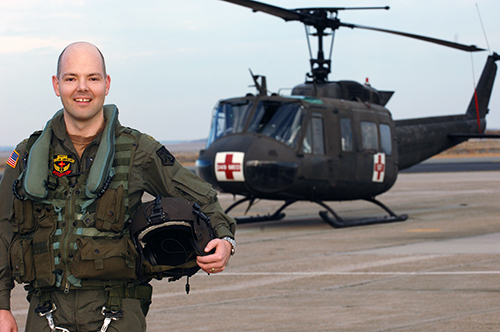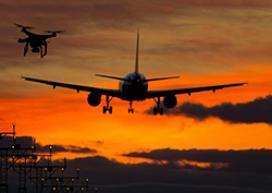How Traditional Aviation Testing Can Inform Unmanned Aerial Technologies
For years, brave souls have taken to the skies with wingsuits, human-powered aircraft, and rocket-propelled devices. But for most of the traveling public, aviation doesn’t mean strapping on a jet pack. It means getting on an airplane with dozens or hundreds of other passengers.
Now, concepts that a decade ago might have seemed at the outer limits of aviation are closer than ever to reality.
“It’s an exciting time,” said Seamus McGovern, an engineer at U.S. DOT’s Volpe Center. “For a long time, from the Wright brothers, to the moon landing, to the Concorde, it seemed something new was happening every year in aviation—but then there was a lull, where technology advanced incrementally. Now there’s a lot happening again with things like private space travel, and a lot of evolution in personal flight mobility.”

Aviation manufacturers around the world are coming up with prototype automated aircraft that carry people, and the genesis of the burgeoning personal flight industry is in today’s unmanned aerial system (UAS) designs.
Drones often achieve flight with helicopter-style rotors or fixed-wing designs, and operators use them for tasks like aerial photography and infrastructure inspection, which do not require exacting aerodynamics certificated by the Federal Aviation Administration.
Contrast that to the point of view of the airplane or helicopter pilot. Pilots are very interested in aerodynamics so that people and goods get where they’re going as safely and efficiently as possible, McGovern said.
In thinking about this dichotomy in design perspectives, McGovern wondered: With the possibility that someday automated aircraft will move people, what would happen if traditional flight certification testing for aircraft designs was applied to drone designs and flight procedures?
“If you do a literature review for drone testing, there’s not much out there,” McGovern said. “So it would be great if operators could learn from design testing in the traditional aviation community.”
In UAS Flight Test for Safety and for Efficiency, McGovern applied traditional flight testing techniques and principles to fixed-wing and rotary-style drone designs. This work won the Best Paper Award at the recent Integrated Communications, Navigation, and Surveillance Systems (ICNS) conference in Herndon, Virginia, in the category of UAS Safety, Modeling, Planning, Test Results.
Traditional aircraft design testing begins with planning, which involves gathering and reviewing information about an aircraft. McGovern found that the manual for the rotary drone model that he reviewed did not conform to aviation protocols—for example, speeds are in meters per second rather than knots.
Also during the planning phase, he found that the altitude reporting system on the rotary drone he examined does not provide precise pressure altitude, which is the convention in aviation.

To improve efficiency, McGovern found that the height of the rotary drone’s landing gear could be adjusted to reduce the power needed for liftoff. He also found that the design of the rotary drone’s fuselage is based on structural layout and aesthetics, and that performance enhancements—including increased speed and inflight operating time—could be achieved with a more aerodynamic design.
For the fixed-wing model, McGovern used a computer simulation to determine the best rate-of-climb speed and the best angle-of-climb, but he cautioned that only a real flight test could accurately determine the best climb speed and angle.
“What I wanted to do in this investigation was to simply show that aviation testing can inform drone design and flight profiles,” McGovern said. “Follow-on efforts to this work could include design and completion of a full flight-test program on selected UAS models. A full flight-test would quantify performance and help manufacturers formulate more aerodynamically efficient designs, preferred flight profiles, measure performance improvements, and identify safety improvements.”
Best Paper Award Goes to Seamus McGovern

In UAS Flight Test for Safety and for Efficiency, which won Best Paper Award at the recent ICNS conference, Volpe engineer Seamus McGovern applied traditional flight testing techniques and principles for aircraft designs to fixed-wing and rotary-style drone designs.
As a naval aviator, McGovern served as an anti-submarine warfare helicopter pilot, helicopter aircraft commander, instructor pilot, and functional check pilot. As an Army aviator, he was a utility helicopter pilot, attack helicopter pilot, aeromedical evacuation pilot, pilot in command, and maintenance test pilot.
